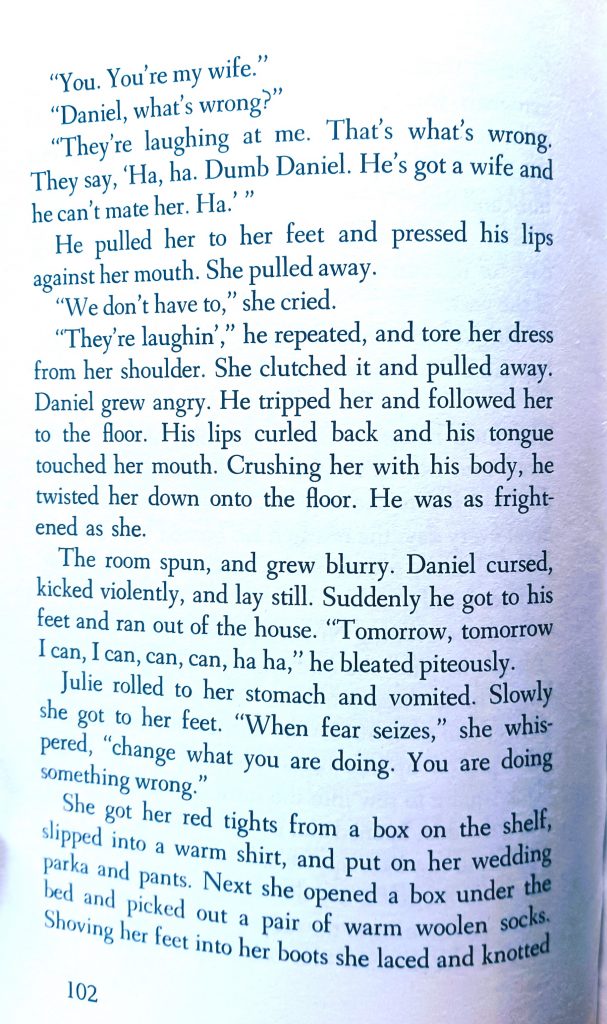Julie of the Wolves is a title I have often seen on lists of good books for children. It seems to be recommended for children starting in about fifth grade. Because there is a perpetual controversy surrounding this book because of a “rape” scene, I wanted to know for myself what all the hubbub was about.
A little background first. Julie is a 13-year-old native Alaskan who has had a very difficult childhood. Her mother is dead. The aunt who cared for her after her father’s disappearance treats Julie like she is a burden. Julie has a hard time finding where she fits in the culture as a native who is expected to conform to modern society.
Julie is already “married” to a boy her age. It is a traditional marriage of convenience and expedience, such as we see in most cultures throughout human history. Though Julie isn’t expected to live with the boy, Daniel, and his family, Daniel’s mother encourages her to move in with them so Julie can help with the work. Julie and Daniel spend most of their time ignoring each other, until the “incident” that causes the controversy.
One evening when Julie is home alone, Daniel comes in and shouts at her, “You!”

Julie packs up and leaves, which is how she ends up lost on the tundra. She spends the summer living near a pack of wolves, and she depends on them to help her get food. She comes to love them, and she begins to feel that they are more like family than any humans she knows.
It’s possible a ten or eleven-year-old might pass over the above scene without really understanding what happened. What is more disturbing to me is the pervading theme. Wolves are not only much like people but, being part of nature, they are actually better than people.
I won’t argue environmental issues here, but I want to warn parents who believe God put man on earth to “be fruitful, and multiply, and replenish the earth, and subdue it: and have dominion over the fish of the sea, and over the fowl of the air, and over every living thing that moveth upon the earth” (Gen. 1:28 KJV). If you decide this is a must-read for your children, you may want to walk close beside them through it.